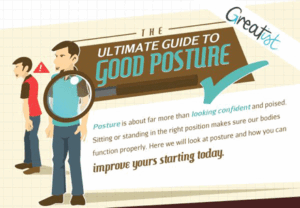Shin Splints or Compartment Syndrome?
One of the most common overuse injuries affecting the lower extremity is the condition known as shin splints. While the term shin splints routinely is used, especially among the athletic population, it does not represent a specific clinical pathology.
Instead, it describes chronic shin pain resulting from overuse. It occurs in two regions of the leg. When it occurs in the proximal anterior lateral region of the leg, it’s called anterior shin splints. It’s also seen regularly in the distal medial region of the leg, where it’s called posterior shin splints or medial tibial stress syndrome (MTSS). This discussion focuses on anterior shin splints, which routinely is confused with another overuse condition of the lower leg called anterior compartment syndrome.
Anterior shin splints are attributed to overuse of the dorsiflexor muscles, such as the tibialis anterior, extensor digitorum longus and extensor hallucis longus. Overuse results from excessive eccentric loading on the dorsiflexors. An example is walking or running downhill. With anterior shin splints, the client reports a history of repetitive activity performed on a regular basis or a sudden increase in activity levels. Pain is felt in the anterior lateral region of the leg near the proximal tibialis anterior attachment. The client with shin splints routinely reports pain at the beginning of an activity that gradually subsides with use, only to return after activity has ceased. The pain is like delayed onset muscle soreness by coming on hours later, even at rest.1
Anterior compartment syndrome sometimes occurs as an acute injury from a direct blow to the lower leg. However, it’s more commonly a chronic condition resulting from overuse, such as running on a hard surface or suddenly changing the intensity of training. The condition often is referred to as exertional compartment syndrome (ECS) if it results from changes in training intensity.
Muscles of the extremities performing similar functions are enclosed within fascial compartments separating them from other muscles. Repetitive overuse of these muscles causes these tissues to swell, increasing compartmental pressure. Subsequently, the deep peroneal nerve and tibial artery or vein are squeezed within the compartment. Ceasing the offending activity allows symptoms to subside immediately. Anterior compartment syndrome and shin splints frequently are confused because symptoms are felt in the same region of the lower leg.2
Clients with exertional compartment syndrome will describe a repetitive activity performed on a regular basis. The client also might report a sudden increase in activity levels preceding the onset of symptoms. For example, chronic compartment syndromes often develop in military recruits when they begin basic training and their activity levels are drastically increased.3 Symptoms might include aching lower leg pain, paresthesia, coldness in the feet, color changes in the distal lower extremity, or motor impairment to the dorsiflexor muscles, in more extreme cases. The more pressure within the compartment, the worse the symptoms will be.
With a compartment syndrome, symptoms increase as the client engages in the aggravating activity. Once the activity is ceased, symptoms generally subside within about 30 minutes as compartmental pressure returns to normal. The reduction of symptoms when activity is ceased is one way to distinguish compartment syndrome from shin splints. Although there might be some initial soreness, shin splint pain characteristically increases after the activity with delayed onset soreness.
Compartment syndromes usually produce pain with palpation only if the compartmental pressure is elevated, such as right after the activity, while shin splints likely are to be tender to palpation long after activity has ceased. Shin splints produce pain with stretching and manual resistance (resisted dorsiflexion). Compartment syndrome is not as likely to be painful with either manual resistance or stretching because neither of these maneuvers increases the intracompartmental pressure. If paresthesia is present, compartment syndrome should be suspected because this is a symptom of nerve involvement and there is no nerve pathology in shin splints.
Both conditions affect the same region of the body and result from similar patterns of overuse. However, it’s crucial to make a distinction between the conditions because treatment strategies for each differ. The only way to accurately identify the crucial differences between these similar conditions is with a comprehensive and thorough examination process.
References
- Couture CJ, Karlson KA. Tibial stress injuries. Physician Sportsmed. 2002;30(6).
- Lowe W. Orthopedic Assessment in Massage Therapy. Sisters, Oregon. Daviau-Scott; 2005.
- Almeida SA, Williams KM, Shaffer RA, Brodine SK. Epidemiological patterns of musculoskeletal injuries and physical training Med Sci Sports Exerc. 1999;31(8):1176-1182
Ready to #feelbetter?
You're just a click away from a wicked good massage!
-

60 Minute Massage Gift Card
$170.00 Add to cart -

90 Minute Massage Gift Card
$255.00 Add to cart -

Mini Aer Small Room Air Purifier
$149.00 Add to cart -
Sale!

Thera-Pearl Sports Pack/Hot Cold
Original price was: $14.99.$12.99Current price is: $12.99. Add to cart -

3 Somadome Sessions Gift Card
$135.00 Add to cart -

TheraBand CLX Connective Loop
$14.99 Select options -

6 Somadome Sessions Gift Card
$270.00 Add to cart -
Sale!

Biofreeze
Original price was: $14.99.$12.99Current price is: $12.99. Add to cart
Passion Mountain
I was at an event recently and was asked by somebody how I could STILL be so passionate for what I do. He said, “What I mean is that you talk about what you do with the passion of child flipping through a new pack of baseball cards. I wish I was that passionate about…
Read MoreFish You Should Scale Back On
New Englander’s love their seafood and we deepen our love affair every summer when our favorite crustaceans, ‘lobstah’ is a plentiful. But what is the best seafood for us and what are the ones that we should be staying away from regardless of how yummy they may be? Monterey Bay Aquarium has combined data from…
Read MoreSports are a Great Metaphor
It’s no secret that my life has always revolved around athletics. From my early days playing pop warner football, through my college years of lacrosse and on into the various community leagues since, being part of a team has always been where I feel most comfortable. What I enjoy most about being part of a…
Read MoreWhat is an Expert?
“An expert is someone widely recognized as a reliable source of technique or skill whose faculty for judging or deciding rightly, justly, or wisely is accorded authority and status by their peers or the public in a specific well-distinguished domain.” – Wikipedia This past month I flew to Atlanta to present a few classes in…
Read MoreThe Power of a Hug
Originally Posted 5/1/2014; following the 1 year anniversary of the Boston Marathon Bombings and our mission to rebound after these horrible attacks on our city. We helped orchestrate the ‘One Run for Boston’; a 3328.2 NON-STOP running relay from LA to Boston, raising over $500K for the victims and survivors of the events of 4/20/2013.…
Read MoreTips from the Table
Without fail, every marathon season, I am asked by my patients, what kind of advice I would offer up to them as they prepare to run the Boston marathon. I first admit that I have never (nor will ever) run a marathon, but given my unique insight of spending 1000’s of hours alone in a…
Read MoreShoulder Impingement
The glenohumeral joint is a highly complex articulation. It has the greatest range of motion of any joint in the body. However, its increased motion occurs at the expense of stability, requiring the soft tissues to play a more critical role in maintaining joint integrity. As a result of increased mechanical demands, numerous soft-tissue injuries…
Read MoreTrain, train, train. Train of fools.
In my seventeen years as a massage therapist, I am still amazed by some of the things I see in my office. Being situated 1/10th of a mile from the finish line of one of the most prestigious marathons in the world, the Boston Marathon, we see more than our fair share of runners coming…
Read MoreAchilles Tendon Disorder
Achilles Tendon Disorder Massage therapists see many clients with active lifestyles. Running, jumping, dancing, climbing, or any number of other activities can put serious stress on the Achilles tendon (AT). AT disorders also can contribute to biomechanical disorders in the foot and lower extremity. That is why it is important for the massage practitioner to…
Read More


